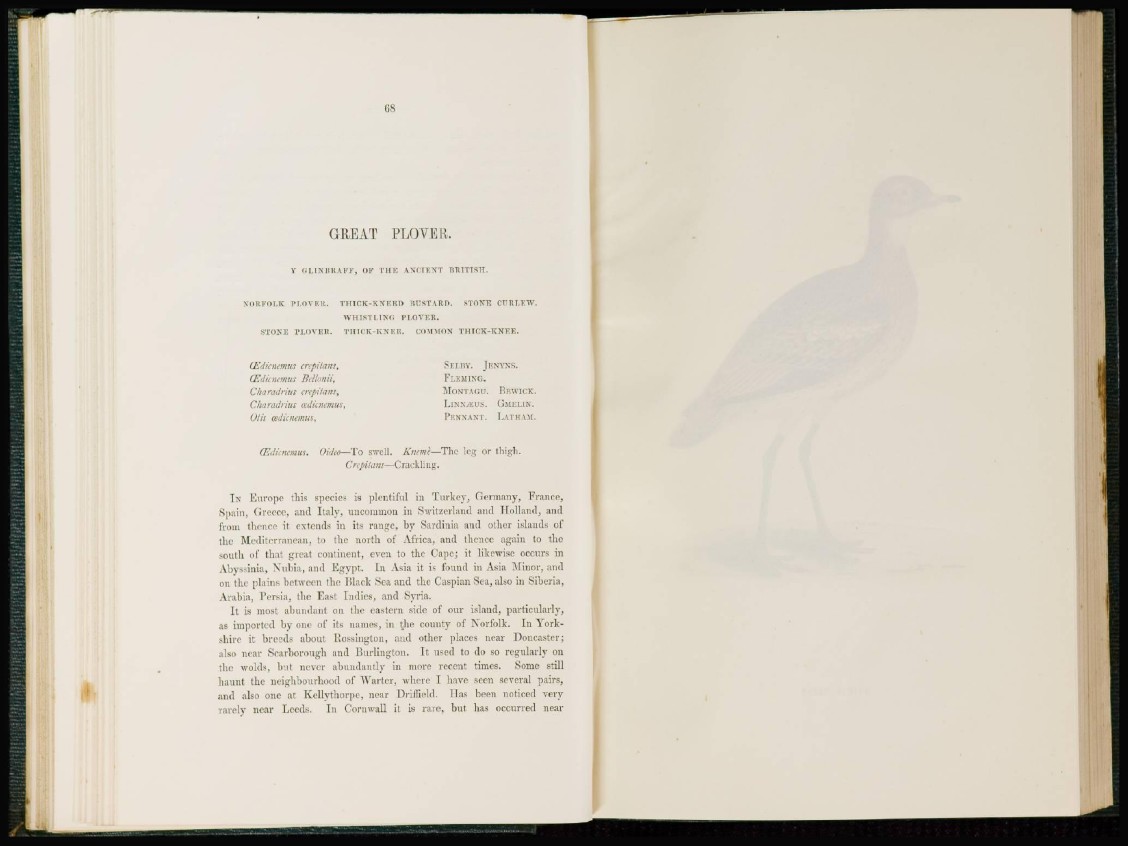
GREAT PLOVER,
V GLINBRAFF, OF THE ANCIENT BRITISH.
NORFOLK PLOVER. THICK-KNEED BUSTARD. STONE CURLEW.
WHISTLING PLOVER.
STONE PLOVER. THICK-KNEE. COMMON THICK-KNEE.
CEdicnemus crepitans,
CEdicnemus Bellonii,
Charadrius crepitans,
Charadrius adicnemus,
Ot/s mdicnemus,
SBLBY, JENYNS.
FLEMING.
MONTAGU. BEWICK.
LIN Nffius. GMELIN.
PENNANT. LATHAM.
CEdicnemus. Oideo—To swell. Knemt—The leg or thigh.
Crepitans—Crackling.
I N Europe this species is plentiful in Turkey. Germany, France,
Spain, Greece, and Italy, uncommon in Switzerland and Holland, and
from thence it extends in its range, by Sardinia and other islands of
the Mediterranean, to the north of Africa, and thence again to the
south of that great continent, even to the Cape; it likewise occurs in
Abyssinia, Nubia, and Egypt. In Asia it is found in Asia Minor, and
on the plains between the Black Sea and the Caspian Sea, also in Siberia,
Arabia, Persia, the East Indies, and Syria.
It is most abundant on the eastern side of our island, particularly,
as imported by one of its names, in the county of Norfolk. In Yorkshire
it breeds about Ilossington, and other places near Doncaster;
also near Scarborough and Burlington. It used to do so regularly on
the wolds, but never abundantly in more recent times. Some still
haunt the neighbourhood of Warter, where I have seen several pairs,
and also one at Kcllyfhorpe, near Driffield. Has been noticed very
rarely near Leeds. In Cornwall it is rare, but has occurred near